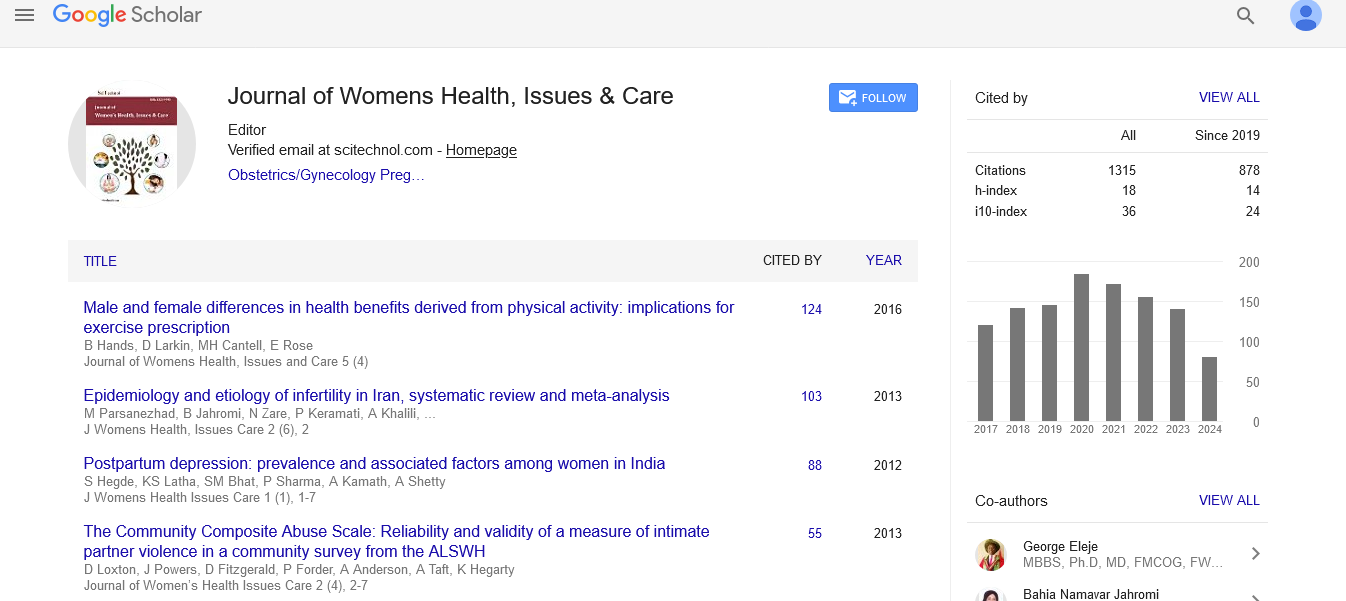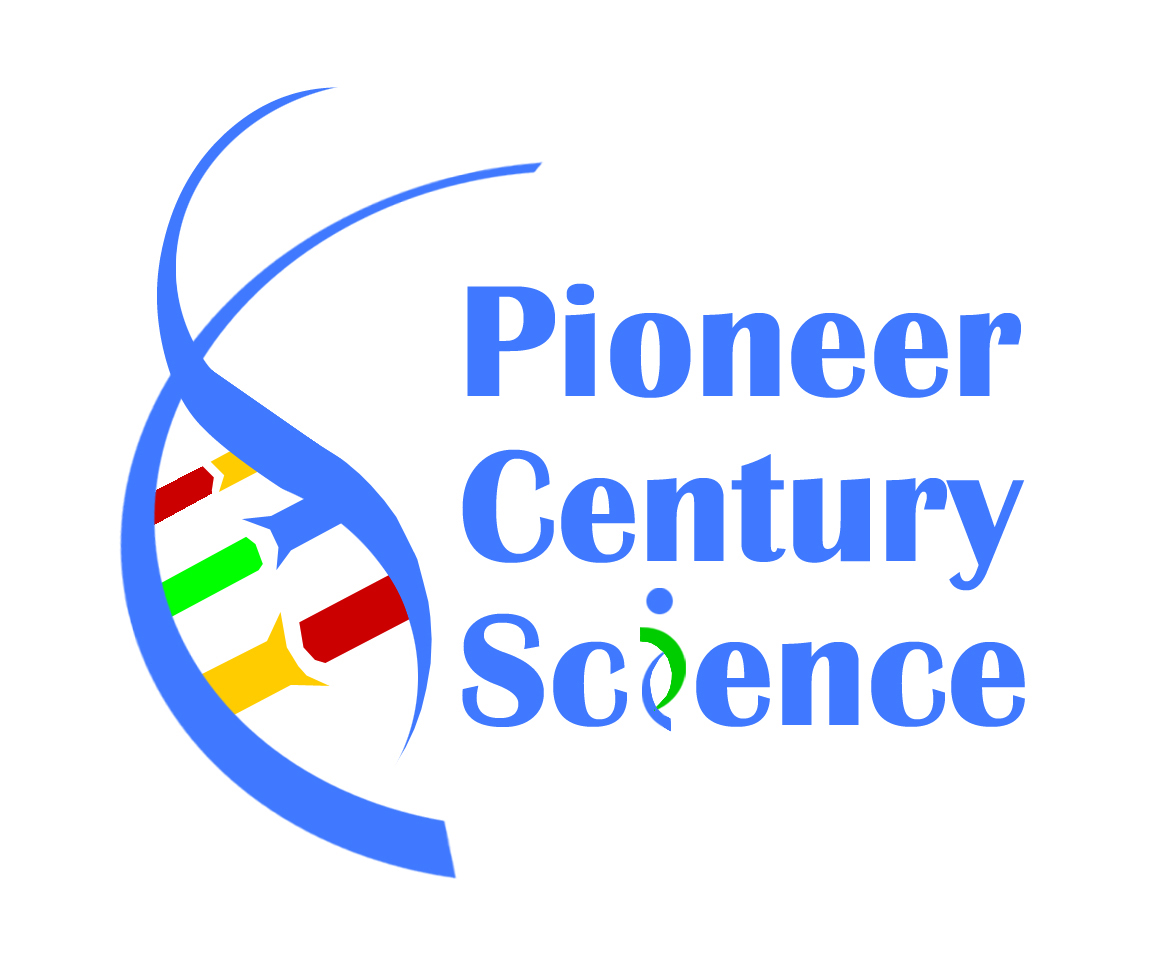Commentary, J Womens Health Vol: 14 Issue: 1
The Impact of Eating Disorders and Reduced Energy Deficiency Syndrome on Fertility: A Short Commentary
Jonathan Jesse Hilling*
Department of Chemistry, St Mary’s University, Twickenham, England
*Corresponding Author: Jonathan Jesse Hilling
Department of Chemistry, St Mary’s University, Twickenham, England
E-mail: jonathanhilling@gmail.com
Received date: 26 September, 2023, Manuscript No. JWHIC-23-114888;
Editor assigned date: 28 September, 2023, PreQC No JWHIC-23-114888 (PQ);
Reviewed date: 08 October, 2023, QC No. JWHIC-23-114888;
Revised date: 17 January, 2025, Manuscript No. JWHIC-23-114888 (R);
Published date: 24 January, 2025, DOI: 10.4172/2325-9795.1000538
Citation:Hilling JJ (2025) The Impact of Eating Disorders and Reduced Energy Deficiency Syndrome on Fertility: A Short Commentary. J Womens Health 14:1.
Description
Eating disorders have become increasingly more prevalent, with those in athletic populations at an increased risk relative to nonathletic populations. Many athletes compete at a high level from a young age, typically undergoing high-volume training during key developmental years. The heightened burden of training coupled with a lack of experience and/or guidance from a core multidisciplinary team places young athletes in a precarious position with Low Energy Availability (LEA) a serious concern. Both female and male athletes performing high-volume training whilst in chronic states of LEA are at a significantly increased risk of developing Reduced Energy Deficiency Syndrome (RED-S). RED-S, like the Female Athlete Triad, affects bone health along with reproductive factors such as hormones, and egg or sperm health. Female athletes experiencing chronic amenorrhea whilst in a perpetual state of LEA become at risk of reduced reproductive hormones, estrogen and progesterone, along with diminished egg quality. A similar situation can arise for male athletes suffering from RED-S resulting in diminished sperm quality, low sperm count and/or motility [1]. If not identified by knowledgeable practitioners, RED-S can persist and manifest over multiple years before becoming apparent. Depending on when the athlete is identified and diagnosed with RED-S, treatment and recovery of healthy bone mineral density (based on z-scores) and restored fertility (evidenced by pregnancy) can be a lengthy process, with reports of cases taking upwards of 6 years [2]. Athletes competing at high levels invest a considerable amount of time in their given sports; as such it is not uncommon for them to meet a partner in their sporting environment. Given the ideal reproductive age falls between the late 20’s and early 30’s, coinciding with or just after an athlete's peak years in their sporting career, if an athlete had suffered or is currently suffering with RED-S it reduces their chance of conceiving a child, which could be further compounded if their partner was in a similar situation. Furthermore, there is a drive from a public health standpoint to encourage individuals to extend their sporting experience beyond their school years. Individuals may delay conceiving a child beyond the ideal reproductive age, potentially citing financial reasons, if an individual is suffering or recovering from REDS this would further reduce their chances of conception. Infertility has also become an increasing issue for obese individuals, especially those who become obese during the key developmental years [3]. With recommendations for prolonged involvement in sports beyond schooling years without proper guidance paired with increasing rates of obesity, it would appear that the financial cost and implications on infertility are being exacerbated on two opposing fronts. In conclusion, the requirement for coaches, core multidisciplinary teams and parents/ guardians to possess a higher knowledge of RED-S for its prevention and identification is an important factor relating to future fertility [4].
Sources of Funding
No funding was required.
Conflict of Interest
None to report.
References
- de Souza MJ, Koltun KJ, Williams NI (2019) The role of energy availability in reproductive function in the female athlete triad and extension of its effects to men: An initial working model of a similar syndrome in male athletes. Sports Med 49: 125-137.
[Crossref] [Google Scholar] [PubMed]
- Hind K (2008) Recovery of bone mineral density and fertility in a former amenorrheic athlete. J Sports Sci Med 7: 415.
- Talmor A, Dunphy B (2015) Female obesity and infertility. Best Pract Res Clin Obstet Gynaecol 29: 498-506.
[Crossref] [Google Scholar] [PubMed]
- Marcotte EL, Domingues AM, Sample JM, Richardson MR, Spector LG (2021) Racial and ethnic disparities in pediatric cancer incidence among children and young adults in the United States by single year of age. Cancer 127: 3651-3663.
[Crossref] [Google Scholar] [PubMed]
 Spanish
Spanish  Chinese
Chinese  Russian
Russian  German
German  French
French  Japanese
Japanese  Portuguese
Portuguese  Hindi
Hindi 



